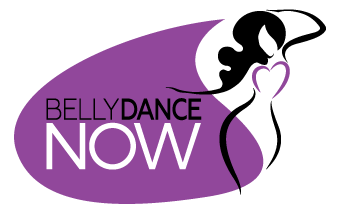Posted on 09/11/2021 by Kay Taylor
Tips to Perform: Online and ‘Live’
 A little introduction… we are delighted that Mayel has contributed this blog. Mayel is a multi award winning belly dancer, a choreographer and a fully qualified JWAAD teacher and assessor….. and you can read more about her at the end of this article and on her website.
A little introduction… we are delighted that Mayel has contributed this blog. Mayel is a multi award winning belly dancer, a choreographer and a fully qualified JWAAD teacher and assessor….. and you can read more about her at the end of this article and on her website.
Tips to perform in real life versus online!
Now that restrictions are lifted it is finally time for us performers to get back to doing what we love in real life settings…
But to my surprise, I found out that getting back to live performance wasn’t as organic as I thought it would have been… I had to adapt my way of performing from dancing in restaurants, cabarets or theatres to online and then back from virtual to in person again.
My oh my I had forgotten how a different way of performing this is.
Here are some tips that I hope will help you make the most of your performances in this “new normal” world of ours:
Tip #1 SPACE
In a venue:
Check out your space as soon as you step a foot in the venue. You might have to adjust quickly your dance set to very oddly shaped rooms.
Make sure you use as much of the available space as possible. You might want to visualise shapes on the floor to use as foot patterns if the rooms allows it.
Example: Circles, Zigzags, figures of 8, Snail shapes, lines… This works particularly well if you are performing on a stage.
Then to change the visual dynamic of your performance, stay on the spot. You might have an audience all around you so use that timeframe to show different angles and come closer to the tables so everyone get to see all of you!
Floor work can create a dramatic level change and constitutes an interesting way of contrasting the mood if you are in a theatre or  cabaret stage. Though if you are in a restaurant, make sure the space is appropriate for it. Most of the audience might not even be able to see you if you are on the floor … That would just make you disappear and you never know what you might encounter on the floor… like broken glass or all sorts of things.
cabaret stage. Though if you are in a restaurant, make sure the space is appropriate for it. Most of the audience might not even be able to see you if you are on the floor … That would just make you disappear and you never know what you might encounter on the floor… like broken glass or all sorts of things.
Online:
It can be challenging to dance at home as the dining table might be on the way but at least you are in control of your space and setting…
Well ahead of your performance, get your performance space set. See what’s ON or OFF your camera field. If possible, find a spot with plenty of good light where you feel comfortable.
I would advise not to travel too much around the room, nor focusing excessively on intricate foot patterns…Instead play with your camera creating some interesting effects. For eg. Create a zoom in and OUT option by coming close or far from your camera. It’s a great way to showcase the precision of your moves. You can also bring your hands close to the camera with your face just behind to highlight your hands and arms work and your facial expression. You can use this technique if you want a black out at the end of your performance, put the palm of your hand on your camera… And your viewers’ screen will look completely black.
It can also be very effective while you do something as intricate as a belly flutter or rolls to come very close to the camera showing only your belly… Get your audience have a close look at what you want.
Make your 2D performance a 3D experience for your virtual viewers.
Break the 2D lines by using twisty hip as well as upper body moves and angles.
Use level changes to make dramatic visual changes. Floor work can look amazing online if you are in the right field of the camera.
Tip #2 MUSIC
In a venue:
Your choice of music is essential and is the key to a good performance so try as much as possible to adapt your set to your audience.
Some will appreciate a full traditional set starting with a Magency ***, followed by some baladi***, then a folkloric*** section and a drum solo*** to finish.
The young crowd will relate more to the latest pop, shaabi*** or Mashwanat*** songs.
The non bellydancers, non familiar with Middle Eastern culture audience members will feel more confortable with Western fusions*** or bouncy upbeat pop Arabic.
***For more info about Music and styles in Middle Eastern dance check out the JWAAD music course
Online:
If you are playing the music out of an external device such as a phone or tablet, set up speakers and test their volume level to make sure you and your audience can hear it nicely. Also check your video call settings to make sure they’re optimized for music; on Zoom, you’ll want to enable original sound and disable automatic volume adjustment and background noise cancellation. A quick Google search can guide you through how to adjust these settings.
For online performance try to keep your set short but effective as it won’t have the same effect as in a venue and it’s very easy for an audience to get bored behind a screen.
Choice of music follows the same principles as in a venue. choose something that will resonate with your audience.
Tip #3 PROPS
In a venue:
Props like veils, fanveils or wings are traditionally used for the 1st song of a set. It’s a great way to grab the attention of your audience and help create a memorable entrance. They will complement your entrance turns, travelling and feet patterns.
Then usually after the entrance, you can bring your sword or candle tray to bring contrasts of mood and use of space. (From happy, clappy and travelling to something more dramatic, powerful and static)
Online:
The use of props can be a little more creative since you control what’s in the field of the camera or not.
Bring in props when it is not expected. If you have your veil or sword ready in front of you but not in sight of your camera, you can grab it at an opportune moment to create a dramatic effect… it makes it look like the prop appears by magic from nowhere.
Tip #4 AUDIENCE
In a venue:
There are 2 types of venues: Cabarets/restaurants and Theatres.
In cabaret settings or restaurants, your audience is here to be entertained so give them entertainment. Your performance should be fun and the proximity of the setting makes it very easy for you to engage with them. Make them the most important part of your show. Dance for them, around them and with them. When you perform in one of these settings you should never plan a strict choreographed set, it would never really work, instead make sure you know your music by heart and keep your set flexible. Your audience will sometimes love to join you, so show them a few organic moves to make them feel and look amazing if they are not familiar with the dance already. Some will prefer to watch. It’s also your job to feel when someone is not confortable with getting up on the floor, so respect their choice and dance for them instead.
Online:
Performing online, to me, somehow relates with performing in a theatre.
It’s easier to commit to a choreographed piece. You can allow more creativity.
It’s more about you sharing a journey, telling a story through movements rather than pure fun entertainment.
 Although in a theatre you have a feel of your audience, you can hear them react to your dance, you can’t see them… so you have to IMAGINE your audience. It’s the same for performing on zoom.
Although in a theatre you have a feel of your audience, you can hear them react to your dance, you can’t see them… so you have to IMAGINE your audience. It’s the same for performing on zoom.
It can feel very awkward and isolating to dance for your laptop but try to visualise your perfect audience like your friends or supporters watching you. It really helps to dance for a friendly and supportive audience.
The exchange of energy and emotion between the audience and the performer is often what makes a performance special. That connection is not lost on Zoom. While performing, think of how you feel and how you can share those feelings with your audience through movements.
___________________________________
More about Mayel:
Mayel is a multi award winning belly dancer, a choreographer and a fully qualified JWAAD teacher and assessor. Her stage experience began at the age of 4 in France in a musical for children, where she performed for 10 years. At the same time, she also trained as a rhythmic gymnast. She has been professionally performing as a belly dancer since 2008 at weddings, stage productions, corporate and private events in UK, Europe and Australia and is currently a resident dancer in London. As a teacher she creates a fun and supportive atmosphere for her students. She teaches the musicality and history of the dance and educates her students in many different Middle Eastern dance styles. Mayel currently teaches an in person open level belly dance class on Tuesday nights at the Place in London Euston as well as online classes on Zoom. As a performer, she has been a soloist in Johara Dance Company directed by Jo Wise as well as one of the core members of Company of Dreams directed by Charlotte Desorgher. She has worked with International star Mr Ozgen featuring as a soloist in his exciting touring shows. Mayel is well-known for her unique style described as full of drama!
